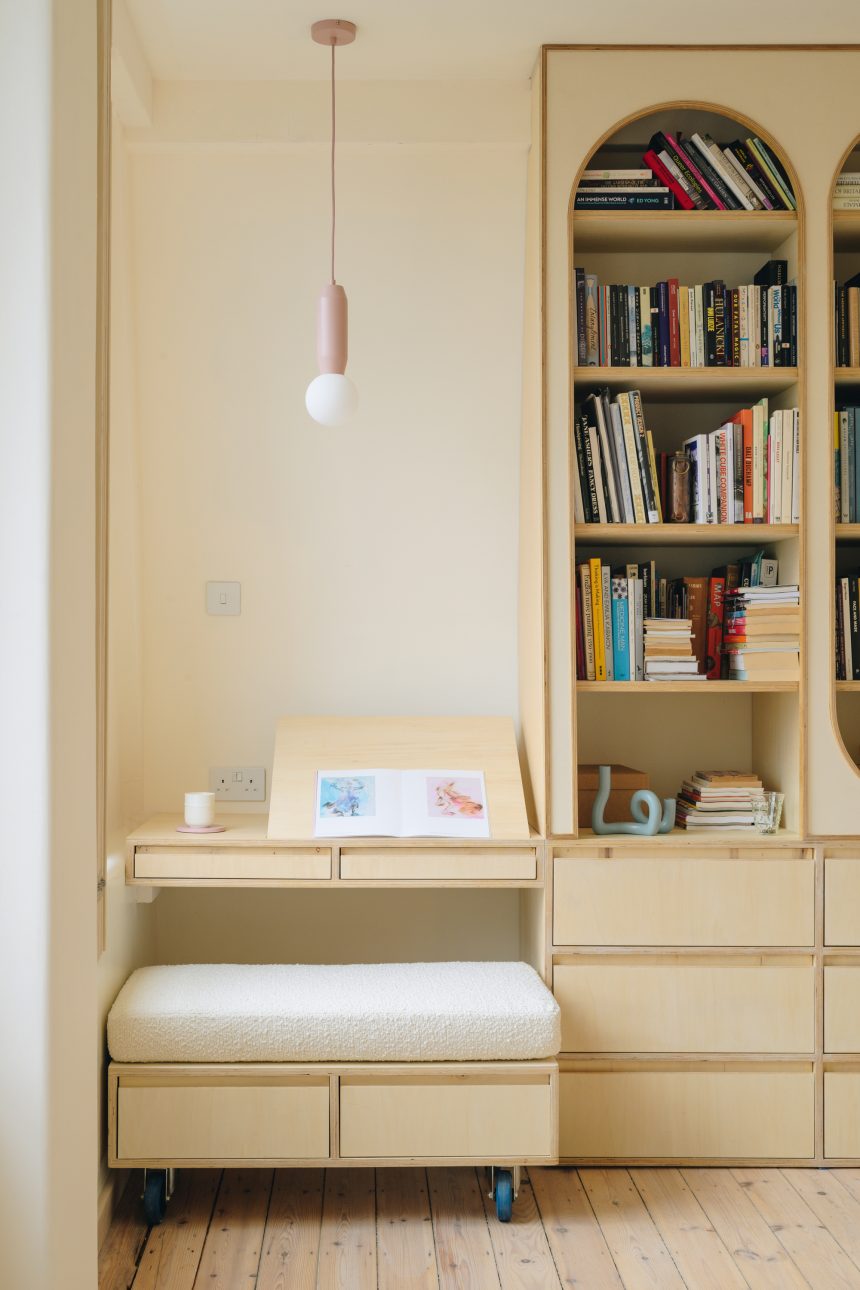Hardworking and often undercover, plywood is a building block for modern interiors. But lately, it’s made a surprising move into the spotlight as designers use exposed plywood not just as a structural material, but a decorative choice in anything from custom furniture to clean-lined joinery and characterful paneling.
“While plywood was once considered a more utilitarian material with visible imperfections, its quality has improved dramatically in recent years,” says Glenda Flaim, managing principal at San Francisco’s Butler Armsden Architects, noting advances in manufacturing techniques. “High-quality plywood can now be found in a range of finishes from raw, matte, and unfinished to lacquered or veneered.”
Made by gluing thin veneers together and rotating each layer so grains are at right angles, the construction gives plywood extra strength while remaining wonderfully lightweight and notably economical. “It’s brilliant for providing efficiency in its material use as it uses less timber than a solid wood product,” explains Anna Parker, director and founder of West Midlands’ Intervention Architecture. “It is cost-effective, whilst being resistant to warping and splitting due to its composition.”
And beyond structural properties, plywood’s overall look is now an interior design trend. “Clients like the warm rich tone of the material and the grain gives visual interest,” says Nimi Attanayake, director and co-founder of South London’s Nimtim Architects. Surfaces vary depending on the type of wood you specify–from maple to oak, birch, and more — but regardless of type, the bulk of designers we spoke with mentioned plywood’s welcoming aesthetic.
And to top it off, plywood is an easy material to cut and shape, allowing designers to create anything from curvy architectural details to minimalist built-in features — a real boon for bespoke projects. Here are just a few ways that exposed plywood is bringing warmth and character to contemporary projects.
1. Use the Raw Edge as a Decorative Detail
A pull-out stool, made from the same plywood, makes a nice interior detail.
(Image credit: Tom Bird. Design: Intervention Architecture)
Making the most of plywood in a compact north London apartment, architects used edges – where you can see stripes from layers of wood veneer – as a contrasting border to outline anything from curved niches to simple built-in storage.
“Using the end of the ply as a darker tone or trim expresses the detail of the material layers, and also can be used to show formation of shapes such as the arches in our shelving design,” says Anna Parker of Intervention Architecture, who worked with fabricator Ian Brown on the clever design. “These edges are lacquered, as they are the laminated ends, but sanded and finished in matt wax will create a neat surface.”
2. Use as a Budget-Friendly Architectural Finish
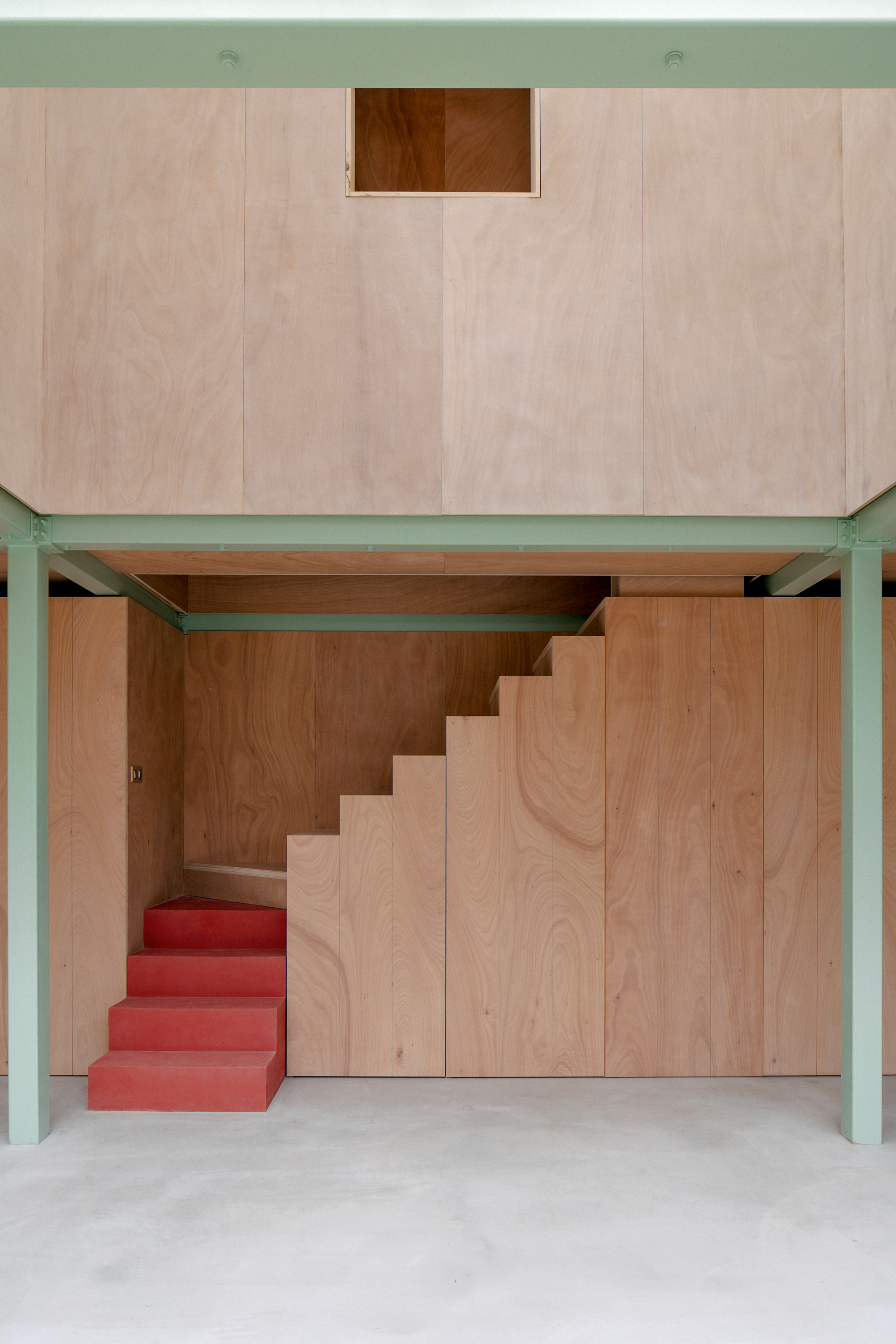
Over a large expanse such as this, plywood will shave a significant amount off the budget over another timber finish.
(Image credit: Giaime Meloni. Design: Jean-Benoît Vétillard Architecture)
While contemporary aesthetics are at play, one notably attractive perk of plywood is more practical: affordability.
“It is a good economical alternative for creating warm and elegant interior designs,” says Paris-based architect Jean-Benoît Vétillard. Working within a tight budget, Jean-Benoît used raw plywood across a range of architectural features throughout a home that doubles as an art studio. “For the staircase, there was no reason to make it in any other material than wood, with the aim of simplicity and geometric abstraction,” he explains of the exposed aesthetic.
3. Go Bespoke With Shapes
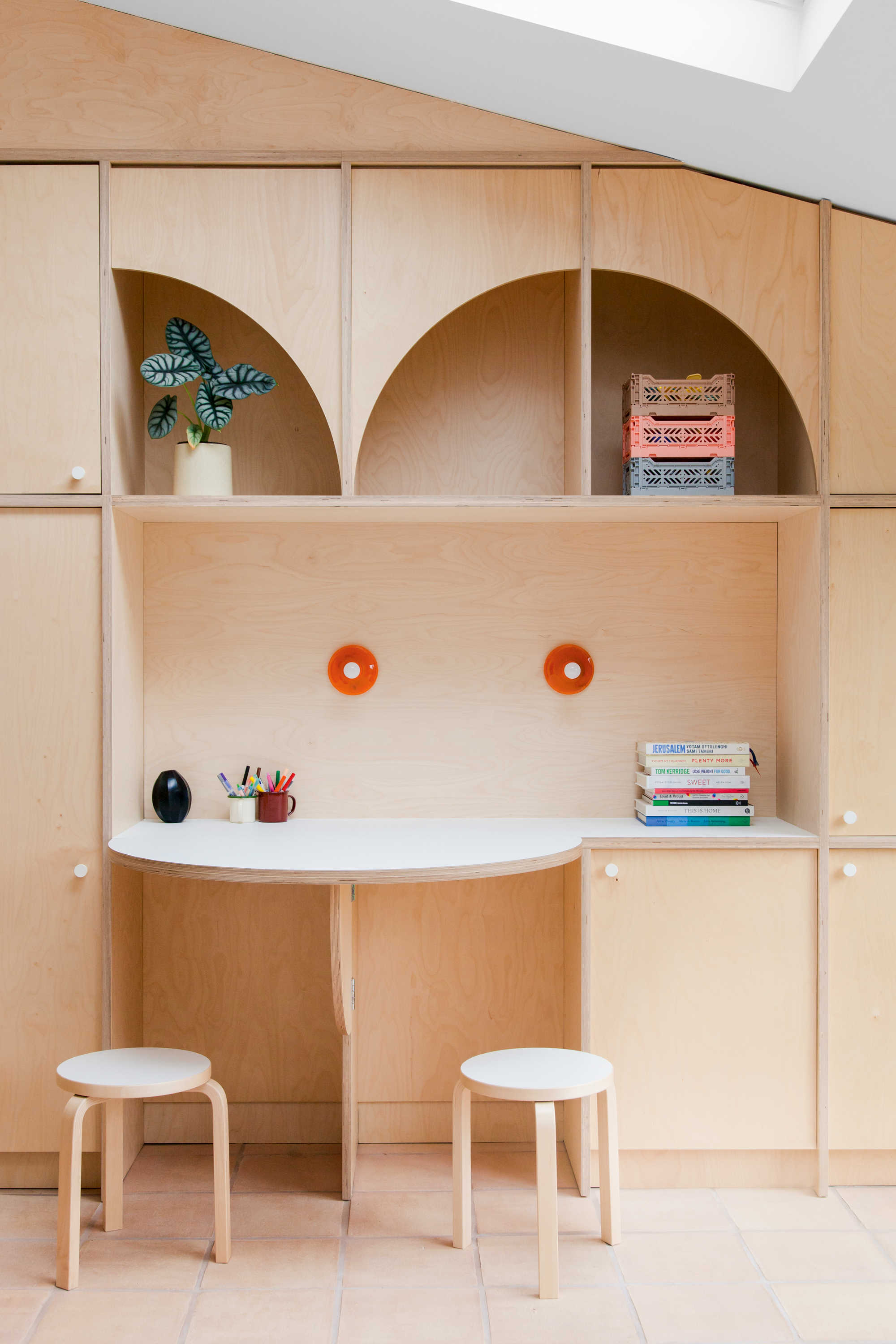
This home office sits aside the plywood kitchen, pictured at the lead of the article.
(Image credit: Megan Taylor. Design: Nimtim Architects)
Versatile and easy to work with, plywood lets you experiment with bespoke shapes and designs while keeping expenses down. For a family’s extension in Southwark, the material gets a creative twist with joinery featuring arched alcoves and a modern kitchen made from plywood, bringing a warm, tactile and custom feel throughout the home.
“The limited pallet of inexpensive plywood has been playfully arranged to celebrate the family’s daily lives,” says Nimi Attanayake, who worked with Chipfix Furniture (a plywood furniture specialist) to create bespoke motifs. “Value has been delivered in the composition rather than the expense of the material.”
4. Embrace the Beauty of the Grain
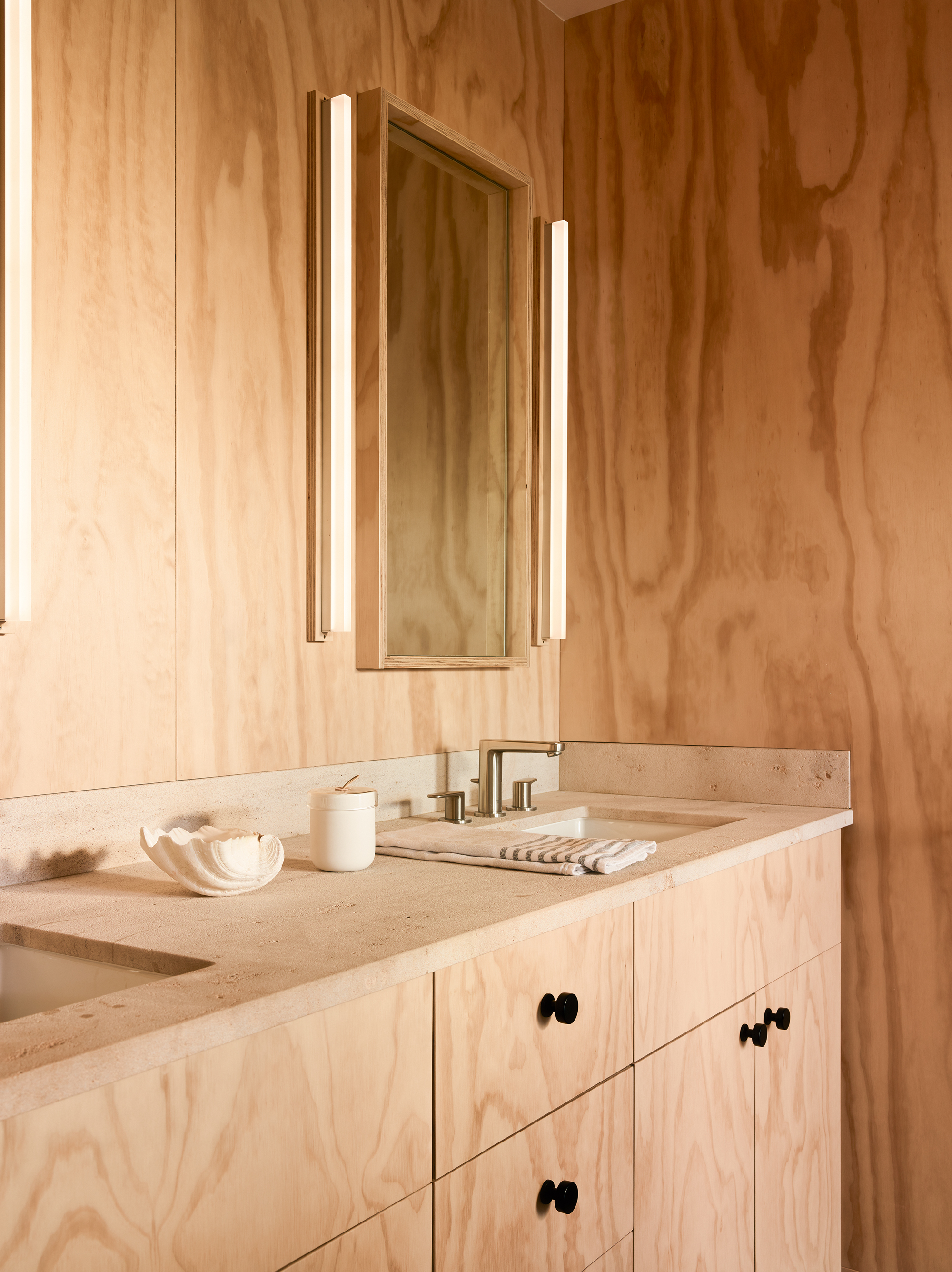
This marine plywood has a more decorative grain.
(Image credit: Joe Fletcher. Design: Butler Armsden Architects)
In this beach shack-inspired modern bathroom, marine-grade plywood (chosen for durability and resistance to moisture) offers up plenty of character alongside a textured limestone counter. Plywood clads walls and cabinets with a swirly grain, creating a similar effect as veining found in stone – but architects were careful not to overdo it.
“Consider where it goes, why it’s placed there, and the overall feeling you want to create in the room,” recommends architect Glenda Flaim. “Treat it with the same respect as you would with a material like marble. Pay close attention to the grain and how the panels come together.”
5. Mix With Other Woods
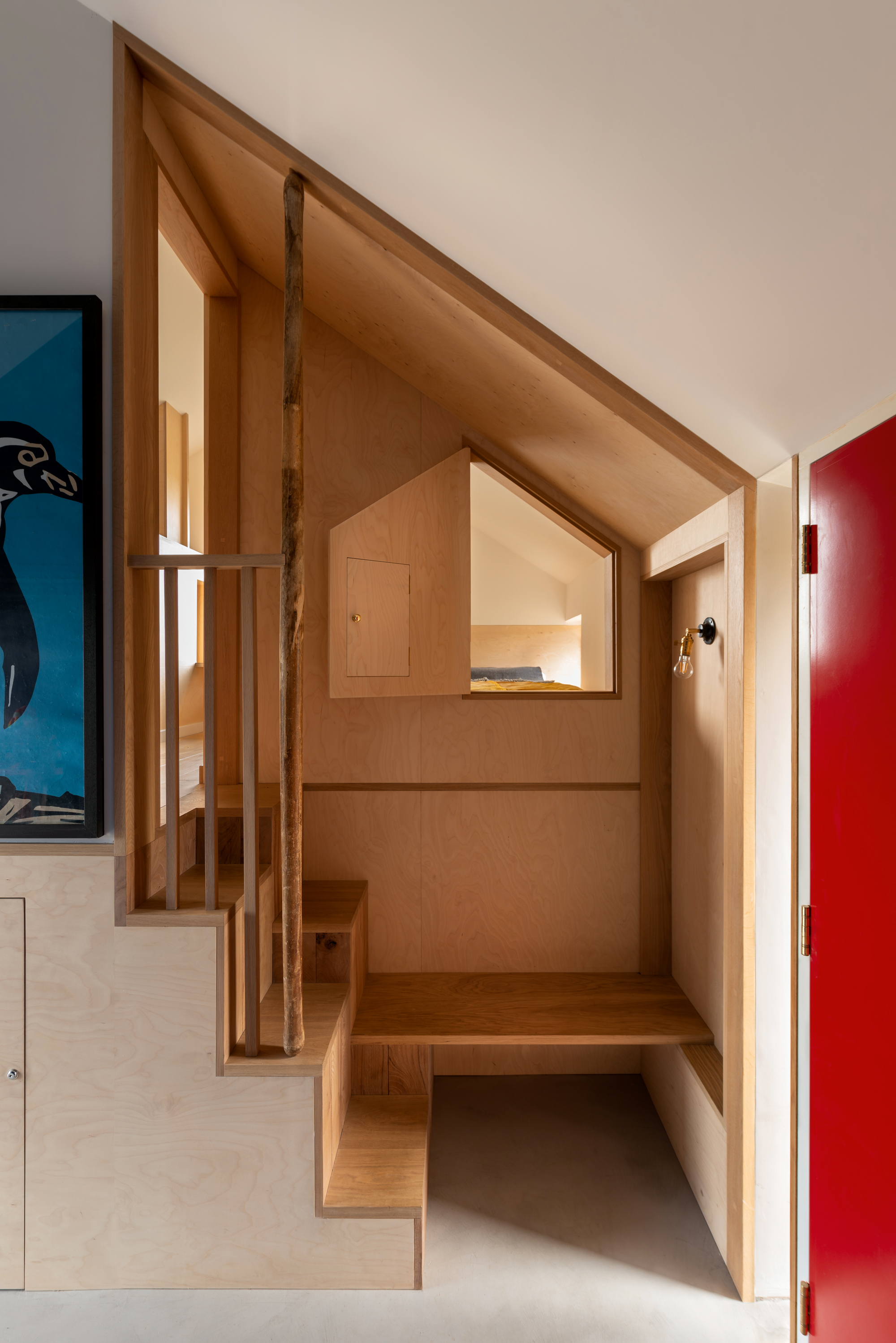
Mixing colors of ply leads to a richer feel.
(Image credit: Johnny Barrington. Design: Norman-Prahm Architects)
The sheer variety of plywood surfaces (from maple to pine) means you have plenty of options for mixing and matching, and even embracing the ‘wood drenching‘ trend in a more diverse way. Birch plywood in particular was key to a palette of mixed woods in a thoughtful extension by London-based Norman-Prahm Architects, combining several timbers salvaged by the client.
“Birch plywood was then chosen to fill the gaps, as the background structure,” says co-founder Tim Norman, noting different materials like oak and elm in the crafty space above. “Birch is wonderful as it is so versatile —it is calm, yet characterful and can combine with lots of different things.”
6. Use for Structured Ceilings
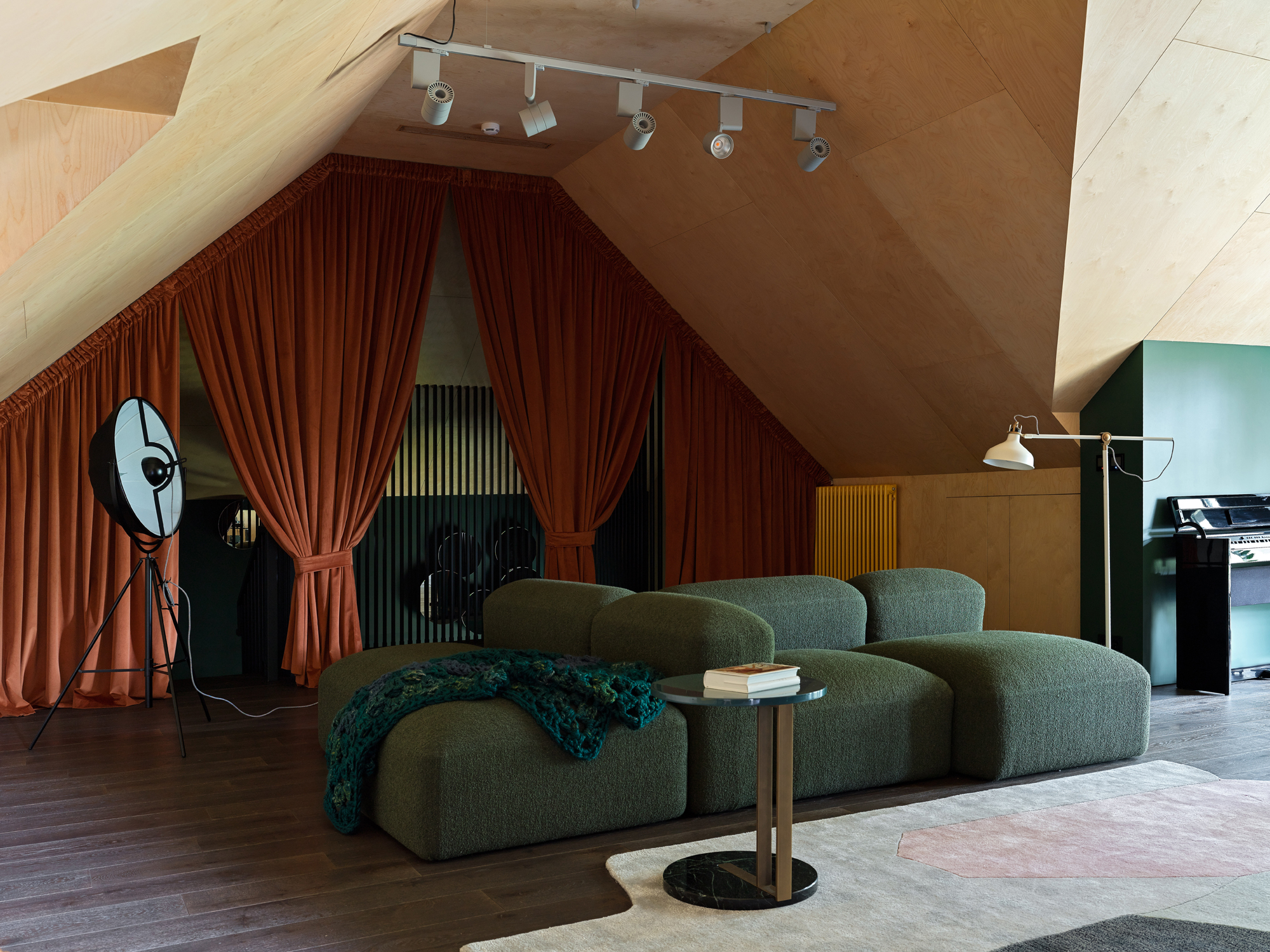
Ply used for this music room’s ceiling help the sound bounce around better.
(Image credit: Sergey Krasyuk. Design: Braginskaya & Architects)
You’ll often plywood used for walls and storage, but it can be used as a ceiling decorating idea, too, as seen in this design by Braginskaya & Architects.
“This idea instantly came to me when we decided to use the attic for that purpose,” remembers Marina Braginskaya. “It helps to make the sound perfect and it’s so beautiful. We had to work hard for ideal quality and ideal color combination though.”
It adds more of a sense of purposefulness to the attics sloped ceilings, and gives a charming lo-fi quality which matches the spaces purpose.
7. Veneer or Paint Over the Top
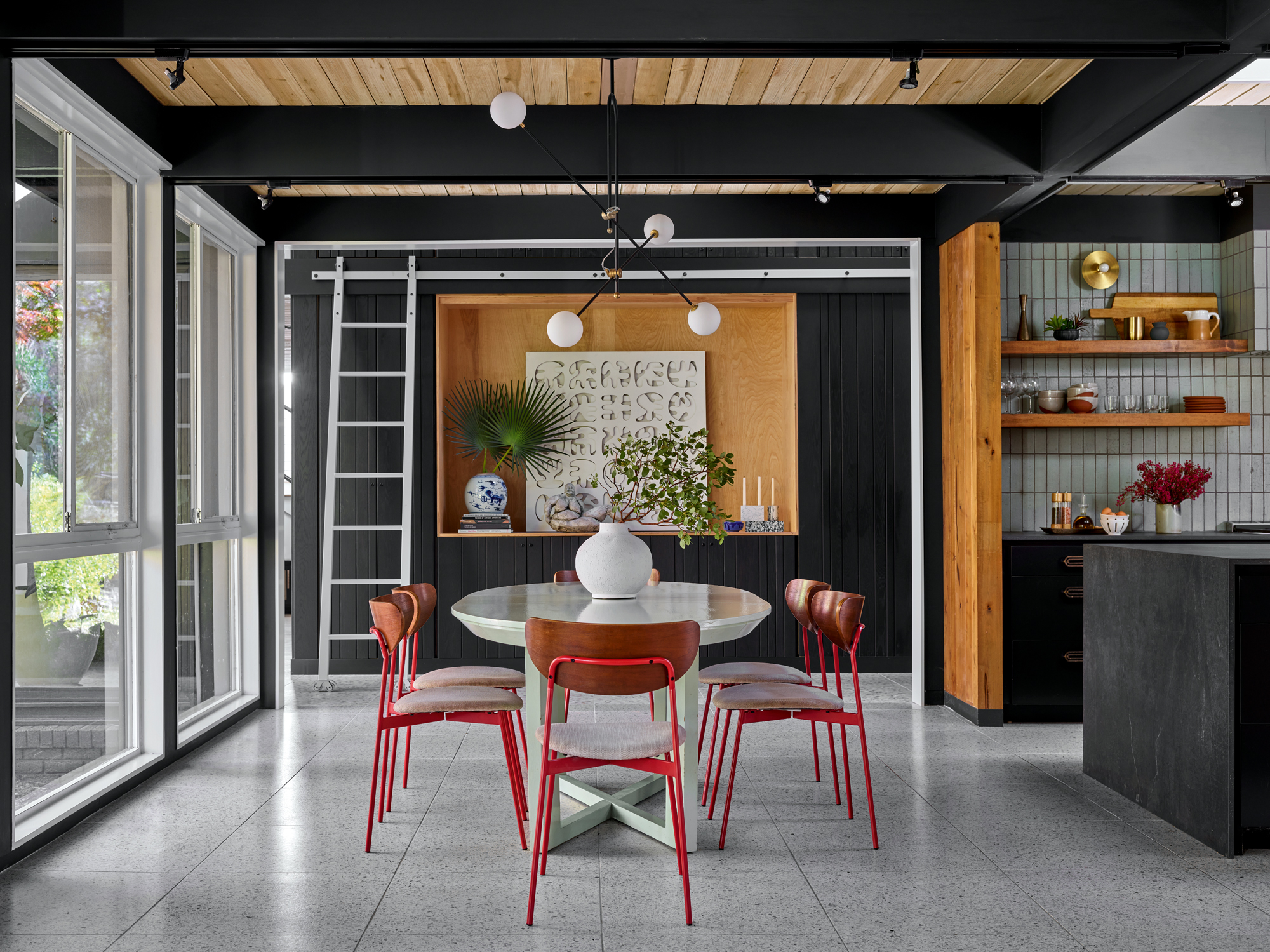
A plywood reveal brings a statement section to this black-painted kitchen.
(Image credit: Emily Followill. Design: Atelier Davis)
For Atlanta’s Atelier Davis, plywood is a straightforward way to inject the modernist aesthetic into your home, embracing materiality and structure in one design. “So many cabinets are actually made of plywood — it’s more structurally stable than actual solid wood — and then veneered over top or painted,” says founder Jessica Davis. “Showcasing the plywood is very much in line with a modern aesthetic.”
For a recent project, Jessica used birch plywood within a niche to make the millwork ‘pop’ with warmth, surrounded by a wall of black-painted paneling. “Plywood is great for mixing with other painted finishes in this way, adding warmth to an otherwise cold and hard-surfaced space,” she adds.
FAQs
Is Plywood Good for Interior Walls
Plywood is good for interior walls, but it still needs to be treated to live up to its durability requirements. “You can use a matte varnish and it’ll largely look the same as an untreated style,” says Livingetc‘s editor Hugh Metcalf, who has ply storage furniture in is home office. “However, it’s not as easy to repair once you get dents or scratches as other types of wood, even when protected.”
Would you try plywood? It’s a popular material in the UK especially, as well as in Europe and Australia, but it’s not a trend that has caught on so much in the States. It has a charming understated quality, but we’d argue it can look surprisngly luxe in the right application, too.

